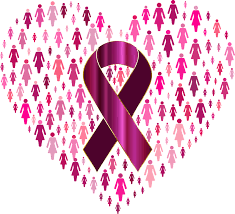The Cancer
Title: Understanding Cancer: Causes, Types, and Advances in Treatment
Introduction:
Cancer, a complex and multifaceted group of diseases, remains a significant global health challenge. Characterized by the uncontrolled growth and spread of abnormal cells, cancer can affect virtually any part of the body. This essay explores the causes and types of cancer, the impact on individuals and societies, and the advancements in cancer treatment and research.
 |
| Cancer |
Causes of Cancer:
1. Genetic Factors:
Inherited genetic mutations can increase the risk of developing certain types of cancer. Individuals with a family history of cancer may be genetically predisposed to the disease.
2. Environmental Exposures:
Exposure to environmental factors, such as carcinogens in tobacco smoke, pollutants, and ultraviolet (UV) radiation, can contribute to the development of cancer. Occupational exposures to certain chemicals also pose risks.
3. Lifestyle Choices:
Lifestyle factors, including diet, physical activity, and alcohol consumption, play a role in cancer risk. Poor dietary habits, lack of exercise, and excessive alcohol intake can contribute to the development of certain cancers.
4. Viral Infections:
Some viruses are linked to an increased risk of cancer. Examples include human papillomavirus (HPV), hepatitis B and C viruses, and Epstein-Barr virus.
Types of Cancer:
1. Carcinomas:
Carcinomas are cancers that originate in the epithelial cells, which cover the body's surfaces and line organs. The majority of cancers, including breast, lung, prostate, and colon cancers, are carcinomas.
2. Sarcomas:
Sarcomas arise in the connective tissues, such as bones, muscles, and blood vessels. Examples include osteosarcoma (bone cancer) and leiomyosarcoma (smooth muscle cancer).
3. Lymphomas:
Lymphomas affect the lymphatic system, including the lymph nodes and lymphatic tissues. Hodgkin lymphoma and non-Hodgkin lymphoma are the two main types.
4. Leukemias:
Leukemias are cancers of the blood and bone marrow, leading to an overproduction of abnormal blood cells. Types include acute myeloid leukemia (AML) and chronic lymphocytic leukemia (CLL).
Impact on Individuals and Societies:
1. Health Impact:
Cancer can have profound effects on individuals, impacting physical health, emotional well-being, and overall quality of life. Treatment modalities, such as chemotherapy and radiation, may cause side effects.
2. Economic Burden:
The economic burden of cancer includes healthcare costs, lost productivity due to illness, and expenses related to treatment. This burden extends to families, employers, and healthcare systems.
3. Psychosocial Challenges:
Cancer diagnosis and treatment pose psychosocial challenges, including emotional distress, anxiety, and depression. Supportive care and psychosocial interventions are integral to addressing these challenges.
Advancements in Treatment:
1. Surgery:
Surgical interventions involve the removal of cancerous tumors and adjacent tissues. Advances in surgical techniques, including minimally invasive procedures, contribute to improved outcomes.
2. Chemotherapy:
Chemotherapy uses drugs to kill or inhibit the growth of cancer cells. Targeted therapies and personalized medicine approaches aim to enhance the effectiveness of chemotherapy while minimizing side effects.
3. Radiation Therapy:
Radiation therapy utilizes high doses of radiation to target and destroy cancer cells. Technological advancements, such as intensity-modulated radiation therapy (IMRT), enhance precision and reduce damage to surrounding tissues.
4. Immunotherapy:
Immunotherapy harnesses the body's immune system to recognize and eliminate cancer cells. Checkpoint inhibitors, CAR-T cell therapy, and cancer vaccines represent innovative approaches in immunotherapy.
5. Targeted Therapies:
Targeted therapies focus on specific molecules involved in cancer growth. These therapies aim to interfere with specific pathways and signaling mechanisms, offering more tailored and effective treatment options.
Research and Hope for the Future:
1. Genomic Research:
Advances in genomic research enable a deeper understanding of the genetic basis of cancer. Precision medicine, guided by genomic information, holds promise for more personalized and targeted treatments.
2. Early Detection:
Early detection through screening and diagnostic technologies enhances the likelihood of successful treatment. Advances in imaging, liquid biopsy, and biomarker identification contribute to early diagnosis.
3. Collaborative Efforts:
Collaborative efforts between researchers, healthcare professionals, and pharmaceutical companies accelerate progress in cancer research. International initiatives focus on sharing knowledge and resources to advance cancer care globally.
Conclusion:
Cancer remains a complex and formidable challenge, affecting millions of lives worldwide. While the impact of cancer on individuals and societies is profound, ongoing advancements in research and treatment provide hope for improved outcomes. The integration of innovative therapies, personalized medicine approaches, and a holistic understanding of the disease contribute to the ongoing pursuit of effective cancer prevention, early detection, and treatment strategies. As the field of oncology continues to evolve, the collective efforts of researchers, healthcare professionals, and communities worldwide offer hope for a future where the burden of cancer is significantly reduced.